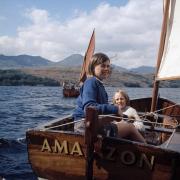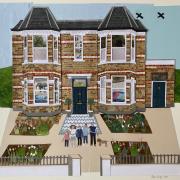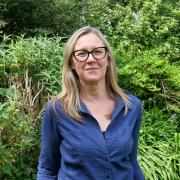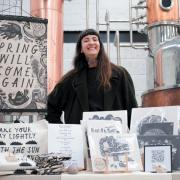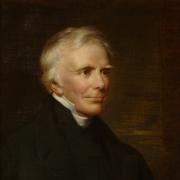Born in Waterlooville on March 8, 1909, Beatrice Shilling was the daughter of butcher Henry Shilling (1852-1936) and Annie (‘Nancy’) née Dulake (1873-1954), and as a child, exhibited every indication of being a tomboy, from spending her pocket money on tools to winning prizes for Meccano.
She was just 14 when she purchased her first motorcycle before showing her fledgling engineering nous by taking its engine apart, then reassembling it. Beatrice’s love of motorbikes continued through the 1930s and in 1934 she became one of only three women to gain the British Motorcycle Racing Club’s Gold Medal for completing a lap of the famed Brooklands circuit at over 100 mph on her Norton M30.
In 1924, in her mid-teens, Beatrice decided she wanted to become an engineer and, after leaving school, went to work for an electrical engineering firm before attending the Victoria University of Manchester, part of today’s University of Manchester, between 1929-32. Here she was one of just two women to obtain a B.Sc. degree, and then after a further year’s study, an M.Sc. in Mechanical Engineering.
Finding gainful employment in her chosen field wasn’t easy though. Not only was Beatrice facing the inevitable sexism of the time, but she was also hindered by a country struggling with a deep economic depression. She did get a research assistant’s position at the University of Birmingham though and in 1936 became a scientific officer at the Royal Aircraft Establishment (RAE), the research and development wing of the RAF, in Farnborough.
Beginning with technical authoring, she transferred to the kind of employ she preferred, working on aircraft engines. Shilling was married in September 1938 to George Naylor, who was also employed at the RAE and went on to be a bomber pilot during WW2, earning the rank of Flight Lieutenant and the Distinguished Flying Cross (DFC).
With the war underway, Shilling was promoted to a technical officer leading carburettor R&D on November 1, 1939, later becoming principal technical officer. It was in this role that Shilling designed a fix to solve the problem of Rolls-Royce Merlin engines flooding from too much fuel, losing power, and stalling during negative-g manoeuvres. Although she worked on numerous projects during the war, it’s this one for which she’s most remembered.

Battle of Britain pilots were grateful this design flaw had been solved as it enabled Spitfires and Hurricanes to compete with Messerschmitts on at least equal terms and was an invaluable contribution to the outcome of the aerial battle that ultimately saw off the German invasion threat in 1940.
By March 1941 she’d toured RAF fighter stations installing her adaptation into the Merlin engines, but it wasn’t until 1943 that Beatrice’s temporary fix was superseded by a permanent solution, one she has also worked on, by which time the threat of invasion was over.
Had we not had Beatrice’s ingenuity and engineering expertise in 1940, the war might just have been lost. Aptly perhaps, Beatrice was dubbed ‘Tilly’ after utilitarian vehicles used by the armed services. Beatrice was awarded the OBE by King George VI in 1947.
It was after the war that Beatrice, and her husband, turned their attention to racing cars and their home workshop became the base for these ‘beasts’ with much attendant clanking and banging as they modified and tuned them to near perfection. Beginning with a 1934 Lagonda Rapier (KG 5363), they moved on to an Austin-Healey Sebring Spring (888HPA). Shilling proved herself equally adept on four wheels as two, achieving several podium finishes at the Goodwood Circuit Members’ Meetings between 1959-62. They’d then acquire a single-seater Elva 200 Formula Junior in 1961 in which both of them suffered accidents; they knew the risks.

Shilling was also involved in Britain’s ‘Blue Streak’ missile development. This IRBM (intermediate-range ballistic missile) was envisaged as the country’s means of maintaining an independent nuclear deterrent. Beatrice’s contributions were many and varied, even helping design and build a bobsled for the RAF’s 1968 Winter Olympic team. She’d continue working for the RAE until retiring in 1969, however, she never obtained one of the top positions, although she was in every sense more than worthy; these jobs were an all-male preserve back then.
Other awards did come her way though. As well as the OBE she was given an honorary doctorate by the University of Surrey (1969) and became an associate member of the Institution of Mechanical Engineers as well as being a longstanding member of the Women’s Engineering Society.
Beatrice Shilling is remembered in the naming of a Farnborough pub, the ‘Tilly Shilling’, opened in 2011. Some of Beatrice’s racing badges and trophies are in the possession of the Brooklands Museum, a museum devoted to her twin loves of aviation and motoring and occupying part of the former Brooklands circuit she once tore around, leathers flapping. A plaque was unveiled in her hometown, at Waterlooville Library, in 2019, to commemorate her manifold achievements, with a further plaque unveiled in Shilling Place the following year. Royal Holloway, University of London, opened its new Department of Electronic Engineering, also in 2019, in its Beatrice Shilling Building. It’s not the only UK university to have a building named after our Beatrice as Coventry University went down the same road in 2020.

CHRONOLOGY
1909 – Birth of Beatrice Shilling in Waterlooville (March 8).
c.1924 – Beatrice is around 15 when she resolves on becoming an engineer.
1932 – Graduates B.Sc. from the Victoria University of Manchester.
1934 – Laps the Brooklands circuit at over 100 mph earning the BMRC’s Gold Medal.
1936 – Starts work at the Royal Aircraft Establishment (RAE), Farnborough.
1938 – Marries George Naylor, a fellow employee at the RAE, Farnborough.
1940 – Invention of temporary fix that helped turn the tide of the Battle of Britain.
1947 – Made an Officer of the Order of the British Empire (OBE).
1968 – Designs a bobsled for the RAF’s Winter Olympic team.
1990 – Death of Beatrice Shilling (November 18) aged 81.





